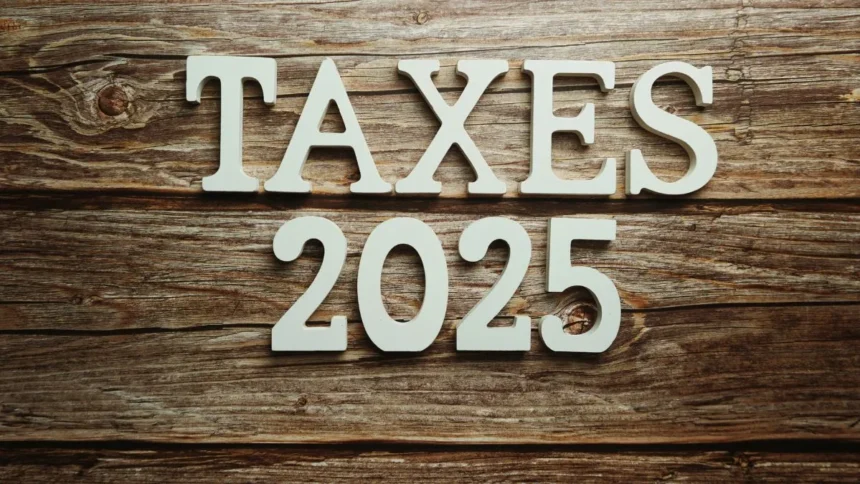The tax brackets for 2025 have arrived, and staying informed about these changes is essential for proper tax planning. Whether you are filing as an individual, married couple, or business owner, understanding how the 2025 tax brackets affect your taxable income can help you save money and avoid surprises. In this article, we’ll break down the updated federal income tax brackets, explore adjustments for inflation, and share tips on how to prepare for the 2025 tax season.
What Are Tax Brackets?
Tax brackets are ranges of taxable income that determine the rate at which individuals and businesses are taxed. In the United States, the federal income tax system is progressive, meaning that higher income levels are taxed at higher rates. However, not all of your income is taxed at the highest bracket you fall into—only the portion exceeding that bracket’s threshold is subject to the higher rate.
The 2025 tax brackets reflect annual adjustments for inflation, helping taxpayers align with rising living costs.
Federal Income Tax Brackets for 2025
The following table outlines the 2025 tax brackets for various filing statuses:
| Filing Status | 10% Bracket | 12% Bracket | 22% Bracket | 24% Bracket | 32% Bracket | 35% Bracket | 37% Bracket |
|---|---|---|---|---|---|---|---|
| Single | Up to $11,000 | $11,001 – $45,000 | $45,001 – $95,000 | $95,001 – $182,000 | $182,001 – $231,000 | $231,001 – $578,000 | Over $578,000 |
| Married (Joint) | Up to $22,000 | $22,001 – $90,000 | $90,001 – $190,000 | $190,001 – $364,000 | $364,001 – $462,000 | $462,001 – $693,000 | Over $693,000 |
| Head of Household | Up to $15,000 | $15,001 – $60,000 | $60,001 – $125,000 | $125,001 – $210,000 | $210,001 – $273,000 | $273,001 – $610,000 | Over $610,000 |
Key Changes for the 2025 Tax Season
1. Adjustments for Inflation
The 2025 tax brackets reflect standard inflation adjustments, ensuring taxpayers are not pushed into higher brackets due to cost-of-living increases. Inflation adjustments prevent bracket creep, which happens when taxpayers end up paying more taxes simply because wages or salaries increased with inflation.
2. Standard Deduction Changes
In addition to changes in the tax brackets, the IRS will also adjust the standard deduction amounts. For 2025, the standard deduction is expected to rise to:
- Single Filers: $14,000
- Married Couples (Joint): $28,000
- Head of Household: $20,000
These increases can reduce your taxable income significantly, keeping more money in your pocket.
3. Impact on Marginal Tax Rates
It is crucial to understand how the marginal tax rates work. Even if your income falls into a higher bracket, only the portion exceeding the previous threshold is taxed at the higher rate. For example, if you are a single filer with $100,000 in taxable income, only the portion above $95,000 will be taxed at 24%, while the rest will be taxed at lower rates.
Planning Tips for 2025 Tax Season
To make the most of the 2025 tax brackets, consider the following tips:
- Maximize Tax-Advantaged Accounts:
Contribute to retirement accounts like 401(k)s, IRAs, and HSAs to reduce your taxable income. These contributions can keep you in a lower bracket. - Time Your Income and Deductions:
If possible, defer some income or accelerate deductions into the current tax year to avoid moving into a higher bracket. - Explore Tax Credits:
Take advantage of tax credits such as the Earned Income Tax Credit (EITC) or the Child Tax Credit (CTC) to reduce your tax liability further. - Consult a Tax Professional:
Changes to the tax brackets can affect your strategy. A tax professional can help you optimize your deductions, credits, and income management based on your specific situation.
How the 2025 Tax Brackets Affect Different Filers
- Single Filers: If you are a single filer earning $50,000, your income will be taxed at both 10% and 12% rates, with the portion exceeding $11,000 taxed at 12%.
- Married Couples: For married couples filing jointly with a combined income of $200,000, part of their income will fall into the 24% bracket. However, the portion above $190,000 will be taxed at this rate, while the rest will remain in lower brackets.
- Self-Employed Individuals: Business owners should pay special attention to quarterly tax payments. Proper income planning ensures that their effective tax rate remains manageable.
Conclusion
Understanding the 2025 tax brackets is essential for effective tax planning. With inflation adjustments and changes to the standard deduction, taxpayers can benefit from strategic planning to lower their taxable income. Be proactive—review your income, maximize contributions to retirement accounts, and take full advantage of deductions and credits. Staying informed and preparing early can help you avoid costly mistakes and ensure you make the most of the 2025 tax season.
Get more info : https://www.timelinetale.com/







